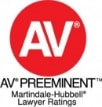The National Highway Traffic Safety Administration (NHTSA) recently conducted a field study of collision-avoidance systems in large trucks and found that the participants (150 tractor-trailers that had collision avoidance systems in place) drove over 85,000 hours and three million miles without a rear-end collision occurs.
The study was conducted in an effort to investigate the safety benefits of current collision-avoidance systems, as well as the possible issues associated with their use.
More specifically, the NHTSA wanted to assess the reliability of the system, evaluate driver performance over a length of time, evaluate the truckers’ overall behavior when driving, provide data on real-world conflicts and generate inputs to safety benefit simulation models.
The study also revealed that when it comes to fatal collisions with trucks, the front of the big rig is usually involved in the cause of the crash.
Collision Avoidance Systems May Be Quite Helpful in Curbing Crashes
The way such systems work is that they use cameras or radars to watch for scenarios that might result in a collision. Once such a situation is found, the system alerts the driver via audible and visual alerts.
If the truck driver fails to act, the truck’s automatic emergency brake system will kick in to slow the truck and potentially avoid a collision (or at the very least lower its speed upon impact). Given the study’s results, a number of fleet safety managers and executives have advised the NHTSA of their recommendation to use the technology.
Many of the fleet executives who had truckers participating in the study noted that they were indeed glad to see the effectiveness of such systems. Still, one executive noted that “collision mitigation does not replace the need for safe drivers and driving practices.” Additionally, it was also noted that the study utilized some of the earlier-model systems, and some executives stated that the newer models were even more effective.
Possible Issues With Collision-Avoidance Systems
The NHTSA included a discussion of the possible issues with equipping tractor-trailers and other large trucks with safety equipment like the kind used for the study. For instance, small business owners and/or owner/operators who purchase used trucks may not be able to obtain the newest technology that is usually found on newer-model trucks.
Moreover, the NHTSA notes that while it is true that radars can do a number of things, such as read the distance and speed of things, there are a number of other things it cannot do, like recognize the conditions of the roadway or other automobiles’ turn signals. Environmental issues, as well as debris in the road, can cause radar interference.
A key issue that may arise with truckers who are operating big rigs that are equipped with such systems is the issue of trust. A truck driver may or may not choose to trust the system’s alerts and safety warnings. The study noted that despite the apparent benefit of the systems, false activations were also observed.
If you or someone you love has been injured in a truck collision of any kind, contact a Denver truck accident attorney with Levine Law as soon as possible to learn more about your rights and options under the law.















